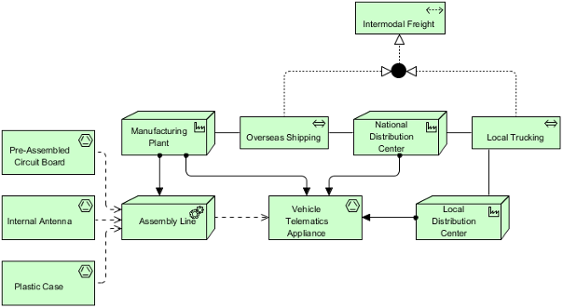
How does a load balancer work? Can I SSH to a load balancer? Load Balancer as a Service (LBaaS) Definition.
LBaaS was developed as the networking service for load balancing in OpenStack private cloud environments. LBaaS can be implemented with open source load balancers as well as fully-supporte commercial implementations. Local server load balancer. Real-time server health and performance checks rapidly detect outages and eliminate downtime. In the event that a web server fails, routing to that server is automatically halted until server operation resumes.
Simplify load balancing for applications With built-in load balancing for cloud services and virtual machines , you can create highly-available and scalable applications in minutes. Load balancing is a general term for various distribution techniques that help spread traffic and workload across different servers within a network. Put in human terms, the idea is simple: the more available hands working, the faster and more efficiently the job gets done, and the less work each person has to do. Using a vendor-agnostic load balancer increases the fault tolerance of your architecture by safeguarding your applications from disruptions caused by any single provider.

When creating a service , you have the option of automatically creating a cloud network load balancer. This provides an externally-accessible IP address that sends traffic to the correct port on your cluster nodes provided your cluster runs in a supported environment and is configured with the correct cloud load balancer provider package. A load balancer is a device that acts as a reverse proxy and distributes network or application traffic across a number of servers.
Load balancers are used to increase capacity (concurrent users) and reliability of applications. For services with tasks using the awsvpc network mode, when you create a target group for your service , you must choose ip as the target type, not instance. When a new server is added to the server group, the load balancer automatically starts to send requests to it. In this manner, a load balancer performs the following functions: Distributes client requests or network load efficiently across multiple servers. Ensures high availability and reliability by sending requests only to servers that are online.
A load balancer , or server load balancer (SLB), is a hardware or software-based device that efficiently distributes network or application traffic across a number of servers. This virtual server is backed by a pool of “real” servers that provide some type of resource to those clients. Server-side load balancers. For Internet services, a server-side load balancer is usually a software program that is listening on the port where external clients connect to access services. The load balancer forwards requests to one of the backend servers, which usually replies to the load balancer.
The external load balancer had different, more secure settings than the internal load balancer. In this instance, the external load balancer was updating the HTTP_HOST header with the internal host name rather than preserve the hostname used by the client. Load balancing is defined as the methodical and efficient distribution of network or application traffic across multiple servers in a server farm. Each load balancer sits between client devices and backend servers, receiving and then distributing incoming requests to any available server capable of fulfilling them. Load balancing Fastly’s Layer load balancer allows you to define content-aware routing decisions while ensuring instant convergence and failover.

Unlike DNS-based solutions, you get immediate and granular control. We also provide improved performance and cost savings over ADCs, especially during flash traffic. At a high level, load balancing is typically accomplished by having a load balancer or set of load balancers present a virtual server to a set of clients.
For non-native applications, Kubernetes offers ways to place a network port or load balancer in between your application and the backend Pods. Deep integration with the Amazon ECContainer Service (ECS), provides a fully-managed container offering. You can load balance traffic among your servers to help improve uptime and easily scale your applications by adding or removing servers, with minimal disruption to your traffic flows.
What are load balancers? If so can someone pls tell me steps to set t. I want to look at unhealthy count ?
No comments:
Post a Comment
Note: Only a member of this blog may post a comment.